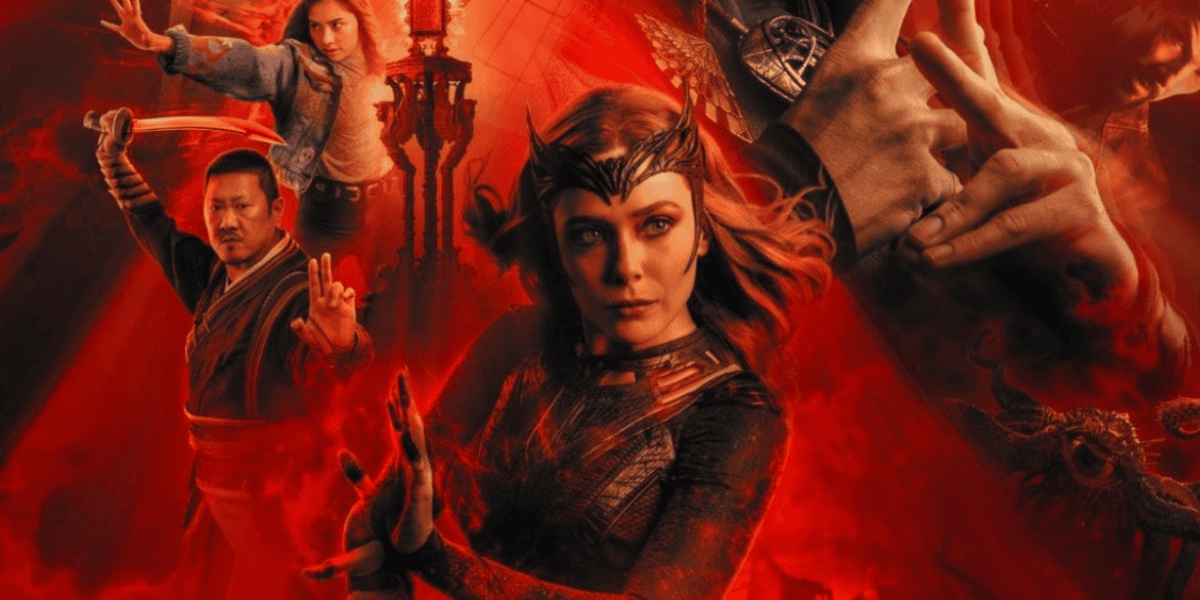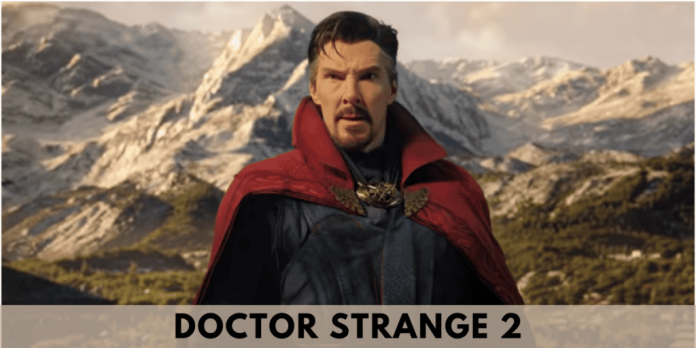Doctor Strange 2: Fan Service and Half-Baked Ideas Get in the Way
The highly anticipated sequel to the 2016 Marvel blockbuster Doctor Strange has finally arrived. Doctor Strange 2: Multiverse of Madness is a visually stunning film that promises to take viewers on a wild ride through the multiverse. Unfortunately, the film is bogged down by fan service and half-baked ideas that get in the way of the story.
The film follows Doctor Strange (Benedict Cumberbatch) as he embarks on a journey to save the multiverse from destruction. Along the way, he is joined by a host of new characters, including Scarlet Witch (Elizabeth Olsen) and a mysterious new villain. While the film does have some exciting moments, it is weighed down by too much fan service and too many half-baked ideas.
The film is filled with references to the comics and other Marvel films, which can be fun for fans, but can also be distracting. There are also too many plot points that are introduced but never fully explored. For example, the film introduces a mysterious new villain, but never explains who they are or why they are a threat. This lack of explanation leaves viewers feeling confused and frustrated.
The film also suffers from a lack of character development. Doctor Strange is a complex character, but the film fails to explore his motivations or his inner struggles. The other characters are also underdeveloped, leaving viewers with a shallow understanding of their motivations and relationships.
Overall, Doctor Strange 2: Multiverse of Madness is a visually stunning film that is bogged down by fan service and half-baked ideas. While the film does have some exciting moments, it fails to fully explore its characters or its plot points, leaving viewers feeling confused and frustrated.
The majority of Marvel Studios’ films are intended to be at the very least relatively accessible, regardless of how much familiarity one has with the greater Marvel Cinematic Universe or the comic books on which the film is loosely based.
The same can be said for director Sam Raimi’s Doctor Strange in the Multiverse of Madness, a crossover event picture that fully embraces the concept of other realities. Multiverse of Madness frequently appears to be attempting to establish a new chapter in Marvel storytelling; yet, what it truly is is a demonstration of how easily these kinds of massive franchise undertakings can come crashing down under their own weight when they become too large.
As a result of Stephen Strange’s pivotal position in the Infinity Saga and his almost rapid transformation into the MCU’s new de facto fatherly mentor figure in Spider-Man: Homecoming, it’s easy to forget just how little time the character has actually spent in the spotlight on his own.
Dr. Strange is given almost little alone time in Multiverse of Madness, but the picture opens with an enthralling and unsettling set piece that captures some of the Jack Kirby-esque enchantment that made Scott Derrickson’s Doctor Strange gleam in 2016.
After defeating Dormammu, aiding in the defeat of Thanos, and putting reality back together after it was shattered by Spider-Man, present-day Stephen Strange doesn’t give much thought to the vivid nightmares he continues to have in which he isn’t quite himself. Earth’s Sorcerer Supreme Wong (Benedict Wong) and Strange are both accustomed to having terrifying dreams filled with magical animals, as is Strange himself. The fact that one of Strange’s night terrors takes a turn so dreadful that he is shocked awake and left wondering who the mysterious young girl from his dream is doesn’t make Strange feel better about the situation.
In lieu of providing specific dates for when Multiverse of Madness takes place after WandaVision and No Way Home, the game instead provides clues through little facts about Stephen’s surroundings, in which he’s become recognised as one of the heroes who saved the universe. Whereas so many of Marvel’s post-Endgame stories have been content to delve into the immediate aftermath and mayhem of Thanos’ snap, Multiverse of Madness appears to be almost deliberately focused on stressing how much people have progressed in their lives since then.
Christine Palmer (Rachel McAdams) and her fellow surgeon Nicodemus West (Michael Stuhlbarg) would still be alive if it weren’t for Doctor Strange and the Avengers, and they are all indebted to the sorcerer for his good deeds. Stephen and those around him, however, find it difficult to come to terms with the fact that they have become a powerful — but not the most powerful — magician whose ex-girlfriend ended up marrying someone else after a period of transition in their lives.
As a reminder of what a snobbish jerk he’s always been and a crystallisation of how alienating his existence as a superhero is, Stephen Strange demonstrates his comics-accurate assholery once more in Multiverse of Madness. Although Strange’s glibness with patients and his peers rendered him unlikable almost to the point of being comical in the first Doctor Strange film, it plays much more like pithiness in this film, which Cumberbatch is occasionally able to accent with charm.
It is not until America Chavez (Xochitl Gomez) unintentionally crashes into Strange’s home universe while being chased by a demonic beast from one of Strange’s nightmares that the plot of Multiverse of Madness really gets going. In addition to providing Earth’s heroes with a new level of awareness about the universe as a concept, America serves as the closest thing Multiverse of Madness has to an audience surrogate. However, despite the fact that Gomez’s America is a strong and compelling presence in moments where she is engaging with Strange and Wong, her chunks of exposition-heavy language do little to distract you from the fact that she is also one of the film’s MacGuffins.

As a result of her uncontrollable power to naturally move between universes — which is wonderfully depicted as her creating star-shaped rifts in space — America has become the target of an unseen magical menace who is hellbent on killing her, and there’s little she can do to stop him. Doctor Strange in the Multiverse of Madness, like Spider-Man: No Way Home before it, takes a fairly heavy-handed approach to the premise that Stephen Strange has taken up where Tony Stark left off in terms of serving as a mentor to misbehaving super children.
Multiverse of Madness is well aware that very little about the Marvel Cinematic Universe’s Doctor Strange has suggested that he would be inclined to look after a child, which is likely why the film frequently feels like it is deliberately slowing down to show you how he comes to care for America, as it does. Multiverse of Madness, on the other hand, never seems to have time to develop America into anything more than a cute little kid who has to be saved, which has the unintended consequence of making Strange’s affection for her that much more difficult to justify to himself.
Despite the fact that Wanda Maximoff (Elizabeth Olsen) is yet another powerful magic user whose dreams have become distressingly vivid and lifelike, Multiverse of Madness’ portrayal of Wanda Maximoff is far more compelling than Strange’s developing paternal feelings. Thankfully, Multiverse of Madness stays away from rehashing too much of WandaVision’s plot and instead employs the logic of comic books to rationally bring its magical brain trust together early in the film’s running time. Because of this pronounced skipping over the intricacies of what happened in WandaVision, the Scarlet Witch’s objectives and her relatively newfound mastery of magic may not make much sense to someone who hasn’t seen the episode in its entirety. It’s not really explained, but what does make sense and feel much more “natural” about Olsen’s Maximoff is his entire tone and intensity, which feels more like a reflection of the character finally being given something to do in a movie for a change.
Magic has become even more central to the story in Multiverse of Madness, allowing it to get more more innovative and cerebral in its depictions of monsters and the whimsical enchantments that marked early Doctor Strange comics, such as Flames of the Faltine. However, because to the fact that this is still a Marvel Studios production, the more imaginative battle sequences using magic in Multiverse of Madness tend to get a little too cluttered. Sam Raimi’s unique interests are on full display in Multiverse of Madness, despite the film’s Marvel-esque style.
It would be dishonest to say that Multiverse of Madness is a horror film. Is this just another huge, costly superhero movie with a haunting and occasionally frightening filter put to it? Probably not.
While some of the scares in Multiverse of Madness come across as jokes, there are far more disturbing and clever examples of what all magicians can pull off with a little imagination, and Raimi attempts to mirror that idea with a mixed bag of ambitious but not always successful shots from bold angles. Danny Elfman’s violent score, on the other hand, fluctuates between varying degrees of florid excess, none of which is able to adequately compliment the sound design of Multiverse of Madness.
To see how many cameos there in Multiverse of Madness, many moviegoers will attend to see the film, even if they don’t care about the MCU. Some of the film’s prominent players, though, do lend an exciting energy to the picture that could use a little more of.
To understand what Doctor Strange in the Multiverse of Madness is trying to do when he travels to alternate realities, you should view the film Spider-Man: No Way Home. As a storytelling device, it simultaneously makes you miss the past while also making you wonder what’s to come. Even though the multiverse was framed as an integral element of the environment in No Way Home, Multiverse of Madness uses it as a plot device to advance the story.
With the Infinity Saga having left the MCU feeling a bit flat, it’s interesting to envision Doctor Strange in the Multiverse of Madness as the beginning of a new chapter for Stephen Strange and his friends. There’s no doubt that Marvel is already planning for a future filled with even more of Strange’s brand of magic and characters you wouldn’t have imagined of seeing in the MCU only a few years ago. How Marvel Studios hopes to get there, on the other hand, is becoming increasingly unclear.
Read More: Winter House Season 2 Release Date, Cast, Trailer and More (Latest News 2022)
Read More: What Is the Alan Keating Net Worth? Latest News 2022!



